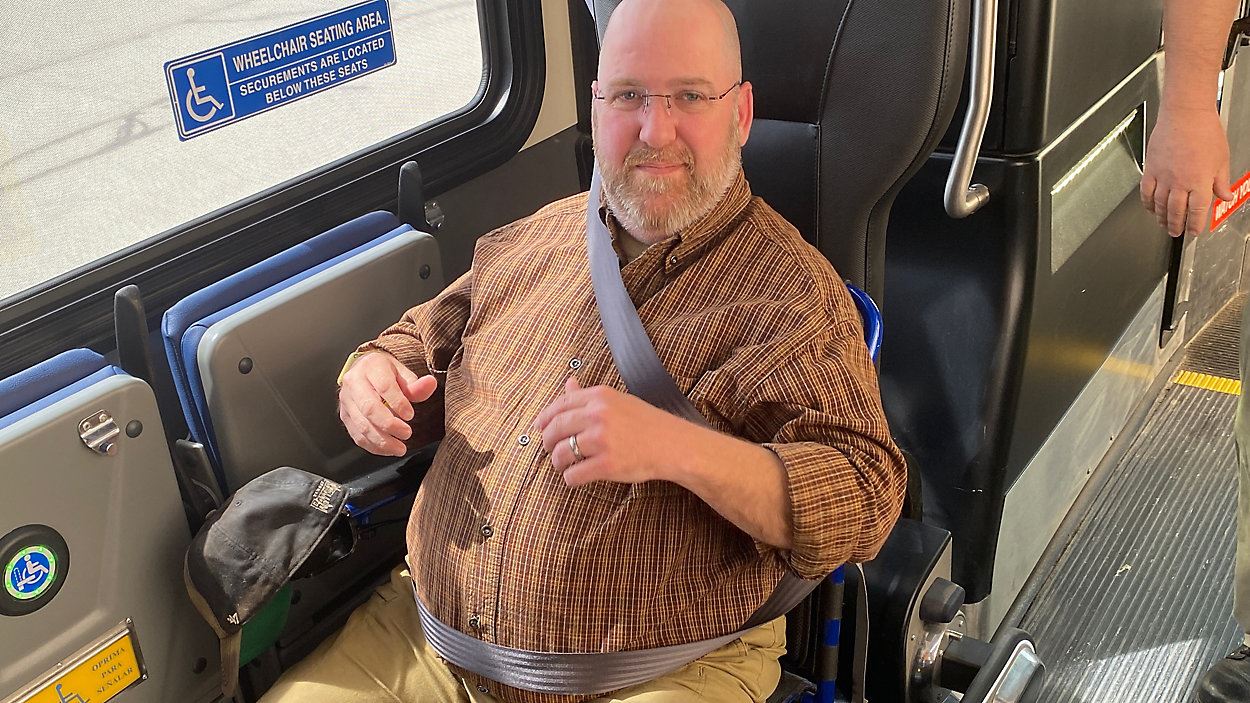
Adam Bellcorelli said the new technology added to GO Transit buses is a win for him and a win for the bus drivers in the city.
And Bellcorelli loves a win-win as much as anybody.
“Being able to ride the bus and not to have to have the driver jump out and get on the floor and do the ratchet straps, or when it’s wintertime, the floor gets a little slushy or dirty, so I feel better for them,’’ said Bellcorelli, a 17-year Oshkosh resident. “And I just tell them where I’m going to stop, then jump on and hit the button, and it secures me right in. It’s independence, and it’s a lot of fun to use.’’
The independence Bellcorelli speaks of comes in what is called Quantum securement technology, a device that allows riders in wheelchairs and mobility devices to have complete independence while riding city buses.
GO Transit, the public transportation service to the Greater Oshkosh area, unveiled the new technology Wednesday as part of Global Accessibility Awareness Day.
“It gives independence and safety, really the two main issues, for people using the bus with mobility devices,’’ said Steve Tomasik, operations manager for GO Transit. “They can get on the bus by themselves and the device actually secures the wheelchair for them.’’
Tomasik said the devices were installed to fill a need, as both riders and drivers became concerned during the COVID pandemic.
“Everyone was scared of how all of this was going to transpire,’’ he said. “You can’t keep six feet of safe distancing if you have someone reaching over you to help you secure your device.”
GO Transit retrofitted 12 of their buses at a cost of $180,000, Tomasik said. Four new buses, which will be delivered later this year, will already have the technology installed.
Tomasik said new air purification systems were also added to all GO Transit buses. They also added a cashless payment system, whereby riders download an app to their cellphone, purchase tickets online, then show their phone to the driver when they get on.
“And the nice things about this system is, let’s say you go over a bump or (the bus) takes a turn or whatever, this will, throughout the course of the ride, readjust itself to make sure you’re still clamped in,” Tomasik said.
Tomasik said the option will remain for riders with mobility devices to be strapped in the old way, as the new system requires the rider to face the back of the bus.
“I really like this,’’ said Bellcorelli of facing the opposite way. “I didn’t think I would at first because normally I do ride, when I was in the old system, I’d ride the other way. But because you put your back against the pad, it feels so much more secure. So, yeah, I do like it. I’ve found it more comfortable riding this way," he said.
Bellcorelli said based on talking with other riders with mobility devices, the new technology is a hit.
“People love it,’’ he said. “The more you can do this on your own, the less you feel like you have to rely on someone else to do things for you.
“It makes all the buses much more accessible and much more fun to use.’’
https://spectrumnews1.com/wi/green-bay/news/2022/05/19/bus-riders-with-mobility-devices-dain-independence

